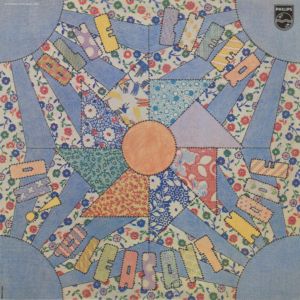
- Format: MP3

Size: 66.9 MB
Bitrate: 256
mp3
Ripped by: ChrisGoesRock
Artwork Included
Japan 24-Bit Remaster
San Francisco-based Blue Cheer was what, in the late '60s, they used to call a "power trio": Dickie Peterson (b. 1948, Grand Forks, ND) (bass, vocals), Paul Whaley (drums), and Leigh Stephens (guitar). They played what later was called heavy metal, and when they debuted in January 1968 with the album Vincebus Eruptum and a Top 40 cover of Eddie Cochran's hit "Summertime Blues," they sounded louder and more extreme than anything that had come before them.
As it turned out, they were a precursor of much that would come after. Unfortunately, Blue Cheer itself didn't get much chance to profit from its prescience. Shortly after its breakthrough, the group was wracked by personnel changes. Leigh Stephens was replaced by Randy Holden after the release of the second album, Outsideinside (August 1968).
Holden left during the recording of the third album, and Bruce Stephens (b. 1946) (vocals, guitar), and Ralph Burns Kellogg (keyboards) joined to finish New! Improved! Blue Cheer (March 1969). Then Whaley quit and was replaced by Norman Mayell (b. 1942, Chicago), leaving Peterson as the only original member.
Bruce Stephens quit during the recording of the fourth album, Blue Cheer (December, 1969), and Gary L. Yoder joined to complete it. Peterson, Kellogg, Mayell, and Yoder then made The Original Human Being (September 1970), and Oh! Pleasant Hope (April, 1971) before Blue Cheer broke up. Dickie Peterson reorganized a new version of the group in 1979, and in 1985, Peterson, Whaley, and guitarist Tony Ranier released a new Blue Cheer album, The Beast Is Back...
After the late '60s bombast by Blue Cheer, this jewel of an album appeared in the early '70s, reflecting the ability of musicians far more in command and sure of themself - and willing to experiment and relax a little. Some of the cuts are understandably dated, but overall this is a wonderful album and the sound is not only great but cheerful. Blue Cheer's predecessor, Mint Tattoo, as strange as it was, nicely bookends this terrific effort - get it if you can.
01 Hiway Man (4:22)
02 Believer (3:41)
03 Money Troubles (4:02)
04 Traveling Man (3:10)
05 Oh ! Pleasant Hope (2:39)
06 I'm the Light (5:39)
07 Ecological Blues (2:26)
08 Lester the Arrester (3:02)
09 Heart Full of Soul (4:37)
Japan 24-Bit Remaster
San Francisco-based Blue Cheer was what, in the late '60s, they used to call a "power trio": Dickie Peterson (b. 1948, Grand Forks, ND) (bass, vocals), Paul Whaley (drums), and Leigh Stephens (guitar). They played what later was called heavy metal, and when they debuted in January 1968 with the album Vincebus Eruptum and a Top 40 cover of Eddie Cochran's hit "Summertime Blues," they sounded louder and more extreme than anything that had come before them.
As it turned out, they were a precursor of much that would come after. Unfortunately, Blue Cheer itself didn't get much chance to profit from its prescience. Shortly after its breakthrough, the group was wracked by personnel changes. Leigh Stephens was replaced by Randy Holden after the release of the second album, Outsideinside (August 1968).
Holden left during the recording of the third album, and Bruce Stephens (b. 1946) (vocals, guitar), and Ralph Burns Kellogg (keyboards) joined to finish New! Improved! Blue Cheer (March 1969). Then Whaley quit and was replaced by Norman Mayell (b. 1942, Chicago), leaving Peterson as the only original member.
Bruce Stephens quit during the recording of the fourth album, Blue Cheer (December, 1969), and Gary L. Yoder joined to complete it. Peterson, Kellogg, Mayell, and Yoder then made The Original Human Being (September 1970), and Oh! Pleasant Hope (April, 1971) before Blue Cheer broke up. Dickie Peterson reorganized a new version of the group in 1979, and in 1985, Peterson, Whaley, and guitarist Tony Ranier released a new Blue Cheer album, The Beast Is Back...
After the late '60s bombast by Blue Cheer, this jewel of an album appeared in the early '70s, reflecting the ability of musicians far more in command and sure of themself - and willing to experiment and relax a little. Some of the cuts are understandably dated, but overall this is a wonderful album and the sound is not only great but cheerful. Blue Cheer's predecessor, Mint Tattoo, as strange as it was, nicely bookends this terrific effort - get it if you can.